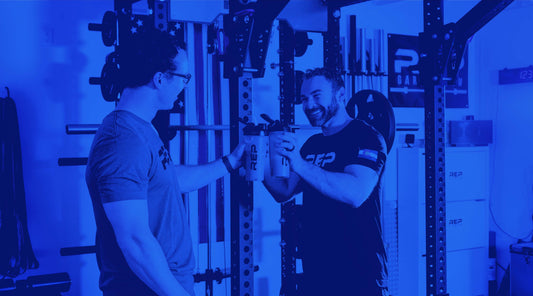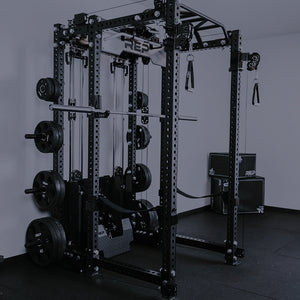
Block in.
Yoga blocks: humble, unassuming, yet surprisingly powerful. These handy props aren’t just for less-bendy beginners; they’re for anyone looking to add support, stability, or a little extra challenge to their yoga practice. Whether you’re working on touching your toes, floating into a balance pose, or melting into a restorative stretch, yoga blocks meet you where you’re at and help you go further.
So exactly what are yoga blocks for? Roll out your mat, take a deep breath, and let’s flow into it.
How to Use Yoga Blocks
1. Support in Standing Poses
Yoga blocks provide extra lift and reach in standing poses like Triangle, Half Moon, or Forward Fold. Think of any position where you’re reaching toward the floor and need a little boost — that’s where a block can help. Placing a block under your hand helps maintain alignment and stability, especially when flexibility is still developing. These simple additions can turn a wobbly pose into one that feels strong, grounded, and empowering.
2. Deepen Your Stretches with Yoga Blocks
Looking to stretch a little deeper without risking a strain? In poses like Pigeon, Seated Forward Fold, or Lizard (all of which involve folding or sinking into the hips), placing a block under your hips, hands, or forearms can support your body so you can hold the stretch longer and more comfortably. Even if you’re just sitting on the floor trying to reach for your toes, resting your hands on blocks makes the stretch more accessible and less frustrating.
3. Modify Seated Poses for Greater Comfort
Not everyone’s hips love sitting cross-legged. That’s okay. Sitting on a yoga block during seated poses can ease tension in your hips, knees, and lower back. The result? A more upright spine and a more comfortable, sustainable seat for meditation, breathwork, or just sitting still for a few minutes. If sitting on the floor feels like a struggle, this is a game-changer.
4. Enhance Balance Poses and Build Strength
Yoga block exercises can also build strength and body awareness. Try squeezing a block between your thighs in Chair Pose, or pressing your palms into a block in Boat Pose to fire up your core. Even if you don’t know the names of all the poses, just know this: Blocks can be used to create resistance and turn a basic movement — like sitting, standing, or holding your body up — into a low-impact strength challenge.
5. Add Stability in Backbends and Heart Openers
Backbends can be intimidating, especially if you’re just starting to explore them. Yoga blocks offer support where you need it most. Place one under your lower back in a bridge position, or under your hands when you lean back and lift your chest. The extra support lets you open your body gradually without putting strain on your spine.
6. Use Yoga Blocks in Restorative Practice
For those days when you’re craving stillness, yoga blocks are your BFF. Use them to prop up your chest in a reclined position. Or slide one under each knee as you lie on your back. Even if you’re not following a formal yoga flow, blocks can make relaxation poses more comfortable. Amazing after a long day or intense workout!
7. Yoga Block Exercises for Resistance and Strength Training
Yoga blocks aren’t just for gentle stretching; they can be powerful tools in strength-building exercises, too. Try holding a block between your thighs during glute bridges to engage your inner thighs, or squeeze a block between your hands while in a high plank to fire up your chest and shoulders. Want to level up your squats? Place a block between your palms at chest height and press as you lower and rise. It turns a bodyweight movement into a total-body burn.
You don’t need to be an expert yogi or lifter for exercises using yoga blocks. Even simple actions like sitting, standing, or breathing can be enhanced with yoga blocks when used mindfully. They’re a great way to make your workout more intentional, without making it more complicated.
What Are the Benefits of Using Yoga Blocks?
Using yoga blocks supports proper alignment, builds confidence in challenging poses, and helps improve flexibility, mobility, and strength. They also allow you to customize your practice to fit your body’s needs, whether that means easing into a pose or taking it to the next level.
What are the Best Yoga Blocks?
Not all yoga blocks are created equal. High-quality yoga blocks maintain their shape, provide consistent support, and feel great in your hands. Cheap blocks may lose their structure or become slippery over time.
Foam blocks are common, but cork yoga blocks offer a sturdier, eco-conscious upgrade. Cork is also naturally antimicrobial and resistant to moisture — ideal for anyone using yoga props regularly (and especially important if you’re into sweaty hot yoga). Cleaning cork blocks is simple. Just wipe them down with a damp cloth and mild soap, then let them air dry. Avoid soaking them or using harsh chemicals. Cork’s natural resistance to moisture and bacteria helps keep things spiffy between washes.
Try these: REP’s Cork Yoga Blocks are made from biodegradable cork, combining sustainability with high performance. The natural texture provides a secure grip, even in sweaty practices, while the firm support ensures the block won’t squish or collapse under pressure. Plus, each block weighs just 2lbs, making them super easy to carry around. These blocks are built to last and hold their shape over time, so you can rely on them practice after practice.
How Many Yoga Blocks Do You Need?
We recommend getting two yoga blocks. Many yoga block exercises require support on both sides, such as in lunges, restorative poses, or backbends. A pair gives you more options, more balance, and more freedom in your movement.
Learn More
-
Explore more yoga props like yoga mats, blocks, and straps.
-
If you’re on the hunt for the perfect mat to pair with your blocks, check out our guide on how to pick the best yoga mat.
similar to this

NEWSLETTER SIGNUP
Product launch information, promotions, blogs, and REP news.







